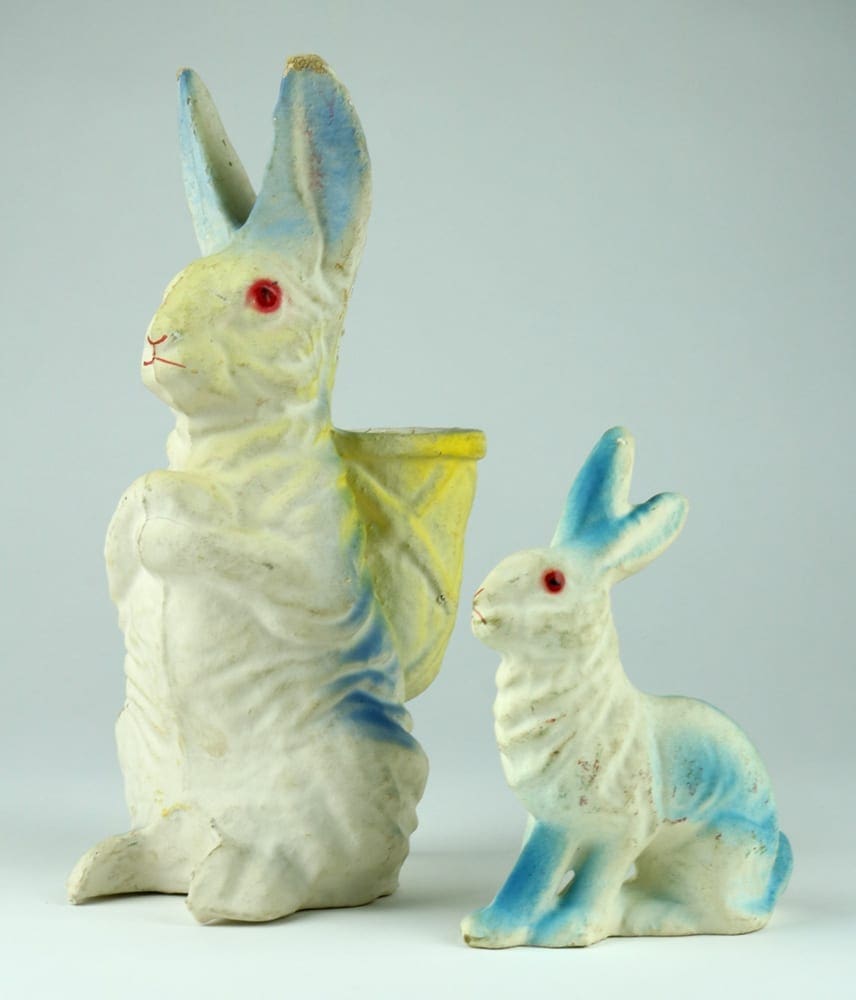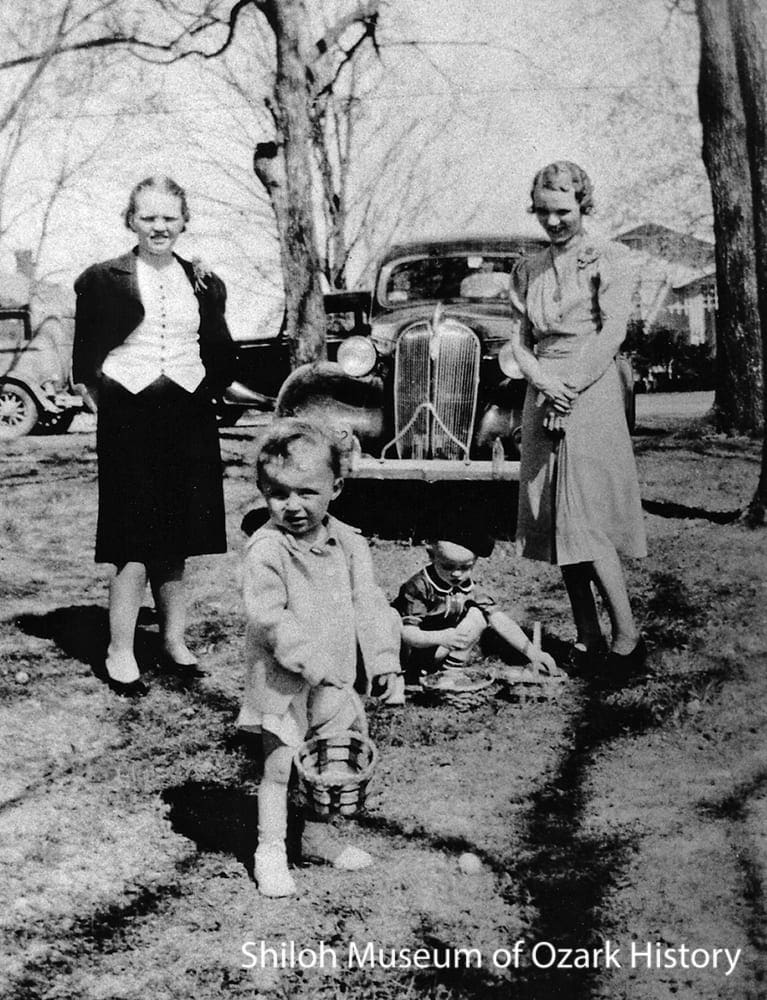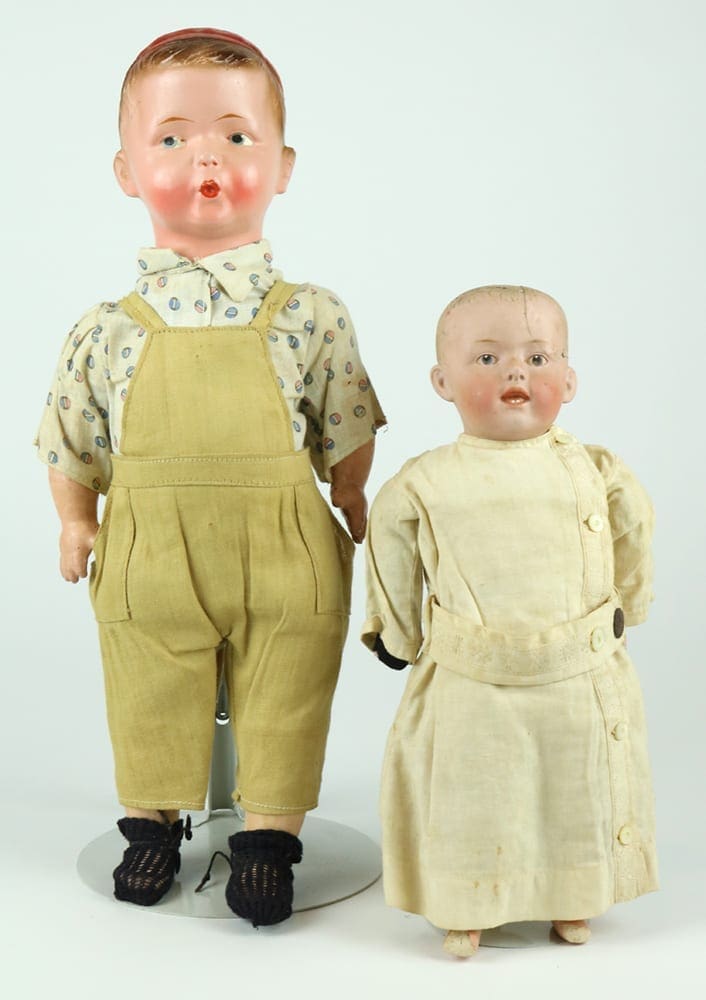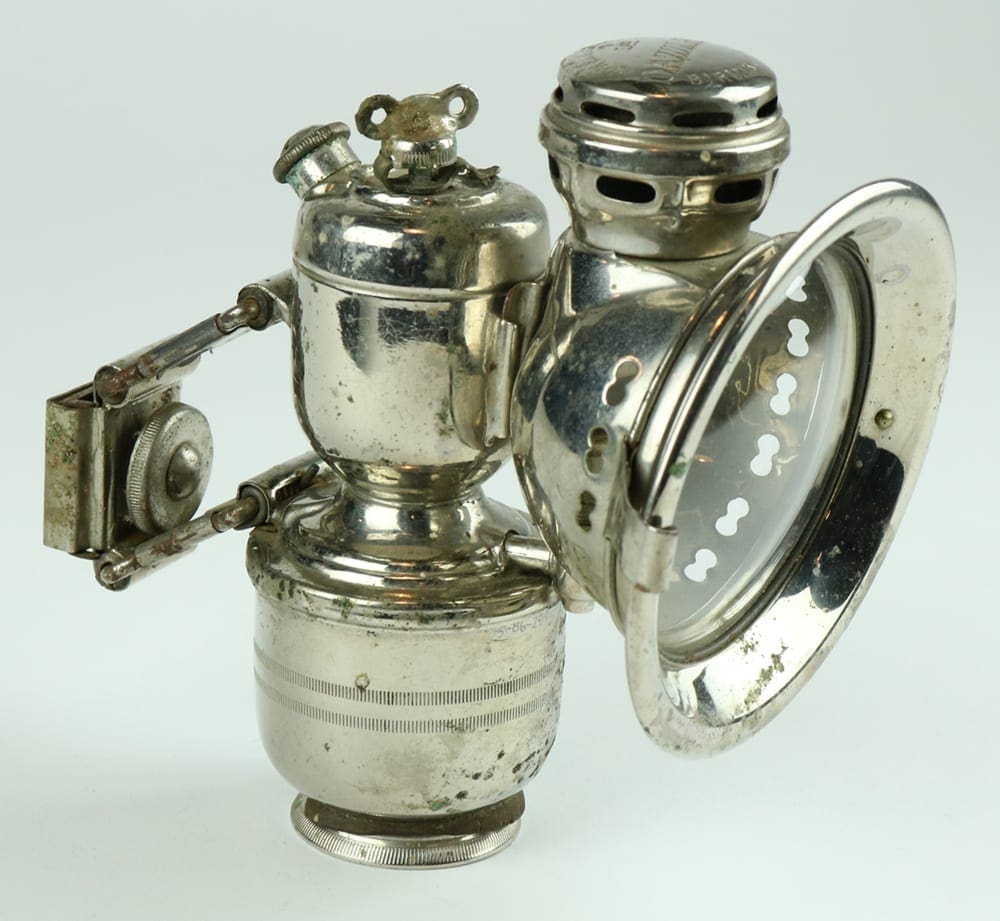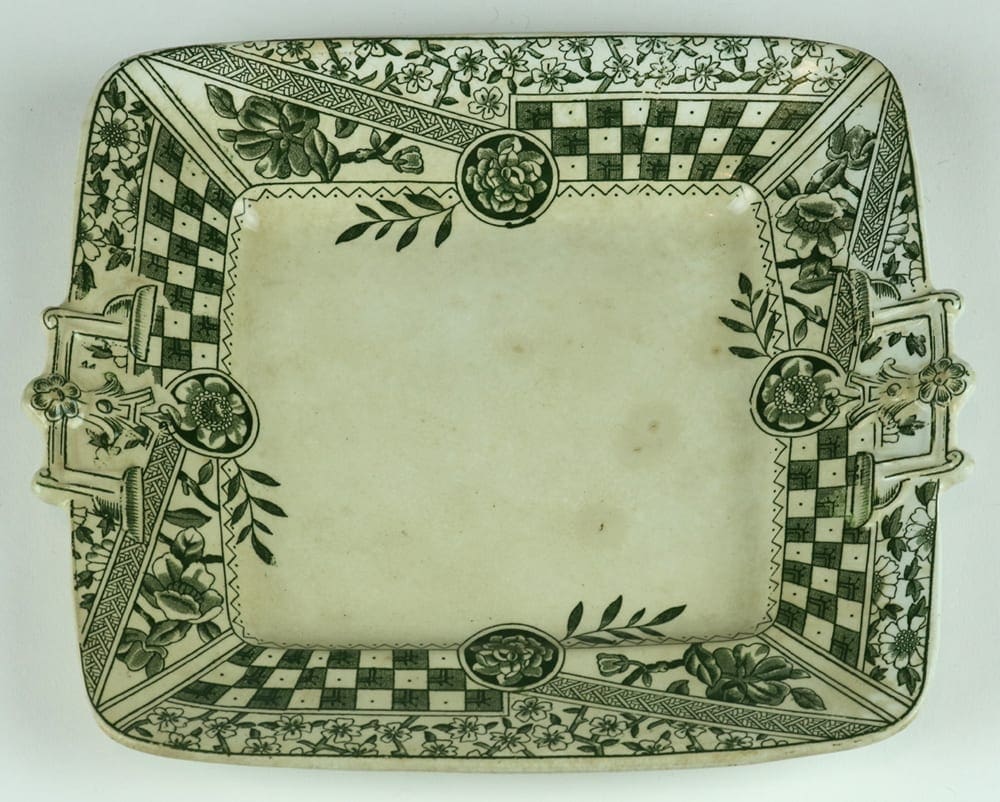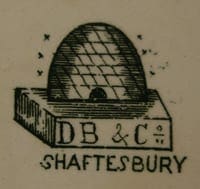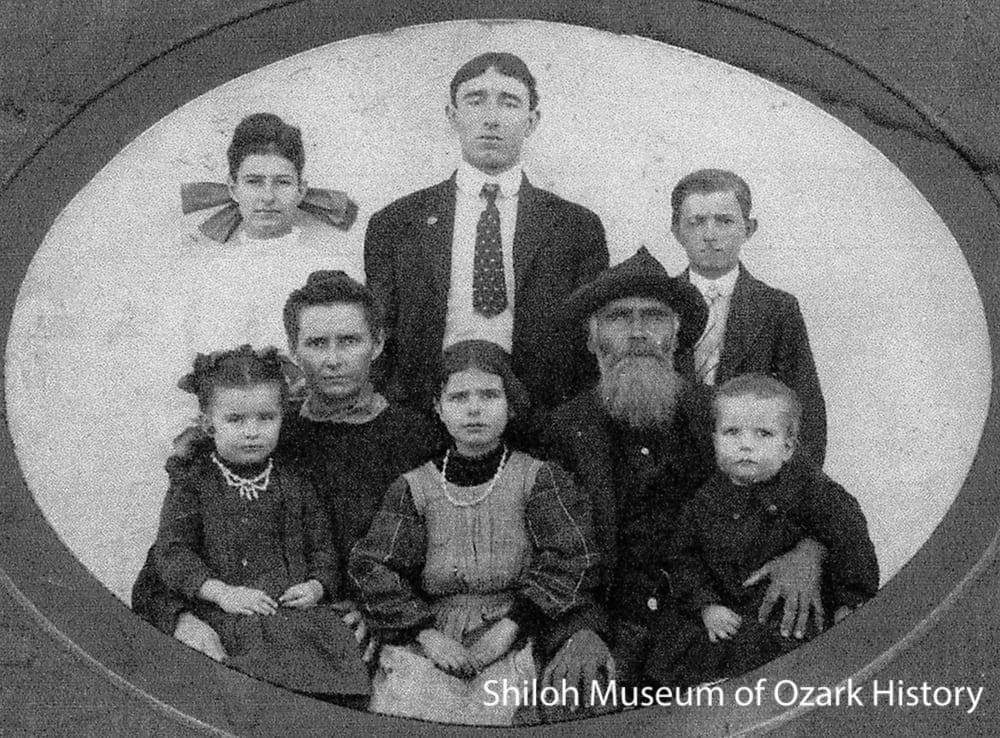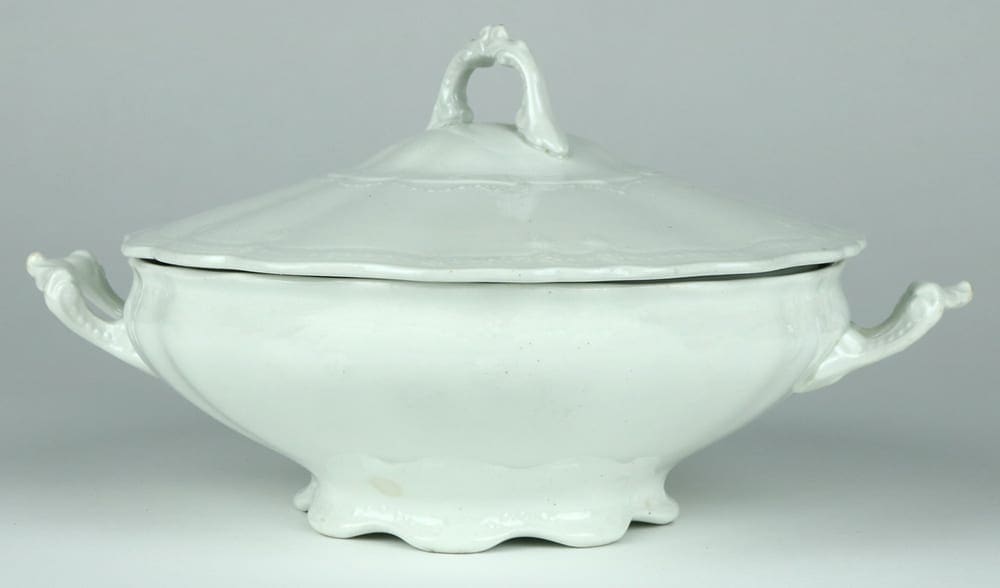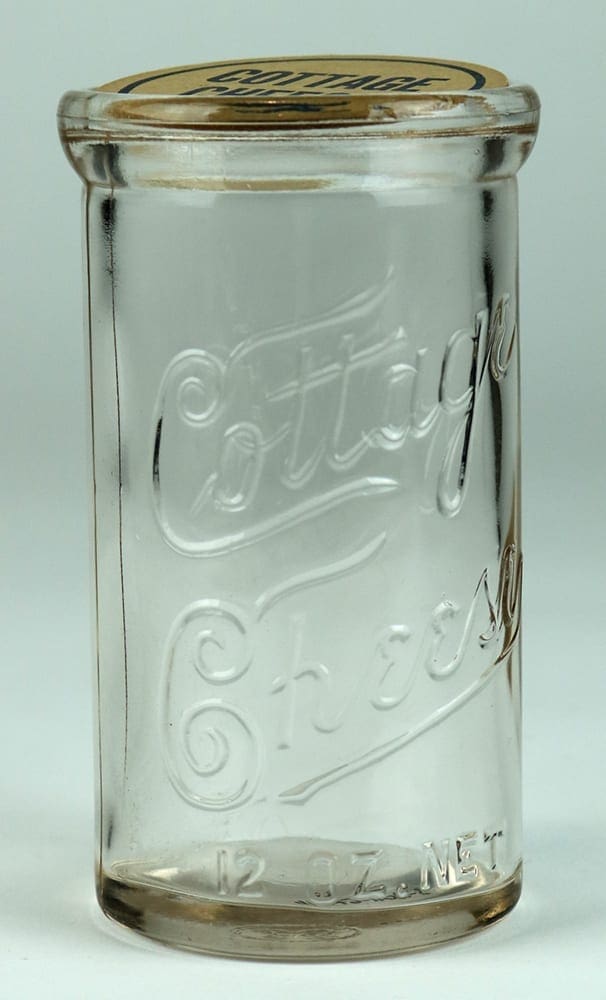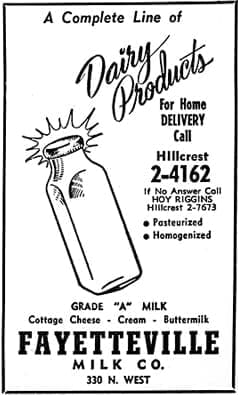Donated by Melvin and Lucille Ferguson
This transferware plate belonged to Hiram Hamilton and Ida May Lierly Tresner, who lived in the Round Mountain community east of Fayetteville. Their daughter, Laura Pearl Tresner Ferguson, recalled that the plate sat on the family dining table and was always used for serving crackers.
According to the Transferware Collectors Club website, “Transferware is the term givento pottery that has had a pattern applied by transferring the print from a copper plate to a specially sized paper and finally to the pottery body. While produced primarily on earthenware, transfer prints are also found on ironstone, porcelain and bone china.”
The plate was manufactured by Dunn Bennett & Company of England, a producer of stoneware items for the American market in the late 1880s and early 1900s. Shaftesbury is the pattern name.

